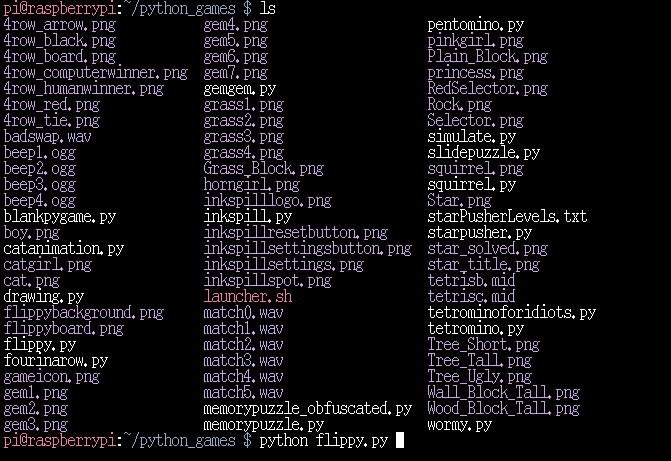Navigating with the terminal
Like on windows or any other computer, files in Linux are arranged in a hierarchical directory structure; meaning starting at root there is a sort of tree of folders containing files and other folders.
The terminal has a concept of ‘working directory’ ; using the metaphor of navigating an office building this is simply what room the terminal is in. If you use a command to list files it will look around the current directory and return you a list of files currently visible.
After opening a terminal with the icon in the upper left you will be confronted with something like this (but most likely with a different color-scheme and font)

We can now use the ‘pwd’ print working directory command to see what directory or room we are in; the result is returned to us in simple text:

Now we know what directory we are in, but we still don’t have any idea what accompanies us; for that we can use ‘ls’ list command; which returns us a list of files and directories in our working directory.

I have added a file here to demonstrate that files are coloured differently to directories.
Now we can try entering one of the directories listed, for this we can use the cd change directory command. This command takes a ‘path’ as an argument. Paths are just strings of text describing the location of a directory or file; pwd returns the ‘path’ of our current working directory. Another path could be ‘/home/pi/Documents/’. Paths can also be relative to our current location, so if our current working directory is ‘/home/pi’ then ‘Documents’ would be a valid path.
Most of the time you will use relative paths, they are shorter and easier to work with too.
To navigate to a directory relative to our own we first use ls to see what our options are.

Then we use the cd command with a path to enter one, we’ll use the python_games directory because we know ahead of time its not empty: cd python_games
Another valid and equivalent command would again be cd /home/pi/python_games
Once we enter the directory we can use the ls command to orient ourselves.

We can see dozens of files and no directories, here we can practice running and terminating a python script.
Running and Exiting python scripts
Just like the cd command there is a python command pre-installed that takes a python script as an argument, python scripts are files with a .py extension.
To run a game choose any file with a .py extension and use it as an argument to run python.

To exit the program at any time use the Control-C keybind, this sends a kill signal to the python process we just started; this will also be used regularly when you want to exit python scripts you are testing.
Next we will navigate back home using terminal commands and create our own directories and files.
Apart from relative and absolute paths that we already covered there are some more special cases, for example the ‘..’ path refers to the directory one level above our current working one. This makes it easy to navigate upwards out of whatever area we entered.
To navigate back to the home directory use ‘cd ..’, and then use ‘pwd’ to check if you made it back.
Finally we will create our own directory and some files to populate it. Just like the cd command there exists a mkdir command which again takes a path. This command simply spawns a folder with our chosen path, for example..

At first we have no indication that our command did anything, but a simple ls will reveal all.

We don’t want to spam files all over our home directory, so before we start making them lets enter our directory with cd.
The command for creating files in the terminal is called touch, it takes a path and creates an empty file whereever we tell it too, or if the file already exists it just ‘touches’ it; updating its last modified date ect.
Now that we are safely in our own directory we can try it out:
There does exist a rm command to remove files, but it can be dangerous if you accidentally delete some script or important document you were just working on!
as you can guess it takes a path as its argument; here we can see it at work.

Last of all we can clean up after our empty directory, navigate back to the home using cd, and then use the sister to rm, rmdir to remove our directory.

Conclusions
In this tutorial we reminded ourselves what directories and files are, how to find our current working directory in the terminal, how to list files and folders, how to enter and leave directories, how to run and exit python scripts, and how to create and delete files / folders.

